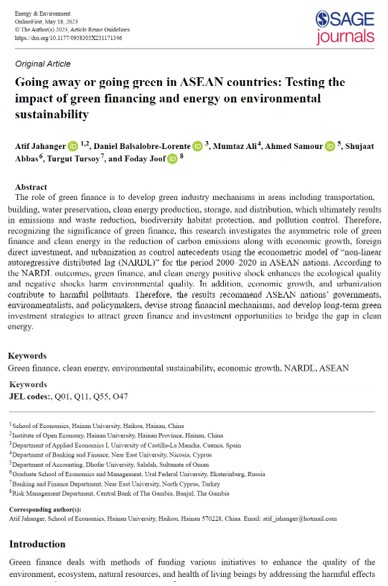
Keyword(s)
Author(s)
1,2) Atif Jahangerhttps, 3) Daniel Balsalobre-Lorente, 4) Mumtaz Ali, 5) Ahmed Samour, 6) Shujaat Abbas, 7) Turgut Tursoy, 8) Foday Joof
Country(ies)
Publisher
Published Date
Access
DOI
The role of green finance is to develop green industry mechanisms in areas including transportation, building, water preservation, clean energy production, storage, and distribution, which ultimately results in emissions and waste reduction, biodiversity habitat protection, and pollution control. Therefore, recognizing the significance of green finance, this research investigates the asymmetric role of green finance and clean energy in the reduction of carbon emissions along with economic growth, foreign direct investment, and urbanization as control antecedents using the econometric model of “non-linear autoregressive distributed lag (NARDL)” for the period 2000–2020 in ASEAN nations. According to the NARDL outcomes, green finance, and clean energy positive shock enhances the ecological quality and negative shocks harm environmental quality. In addition, economic growth, and urbanization contribute to harmful pollutants. Therefore, the results recommend ASEAN nations’ governments, environmentalists, and policymakers, devise strong financial mechanisms, and develop long-term green investment strategies to attract green finance and investment opportunities to bridge the gap in clean energy.